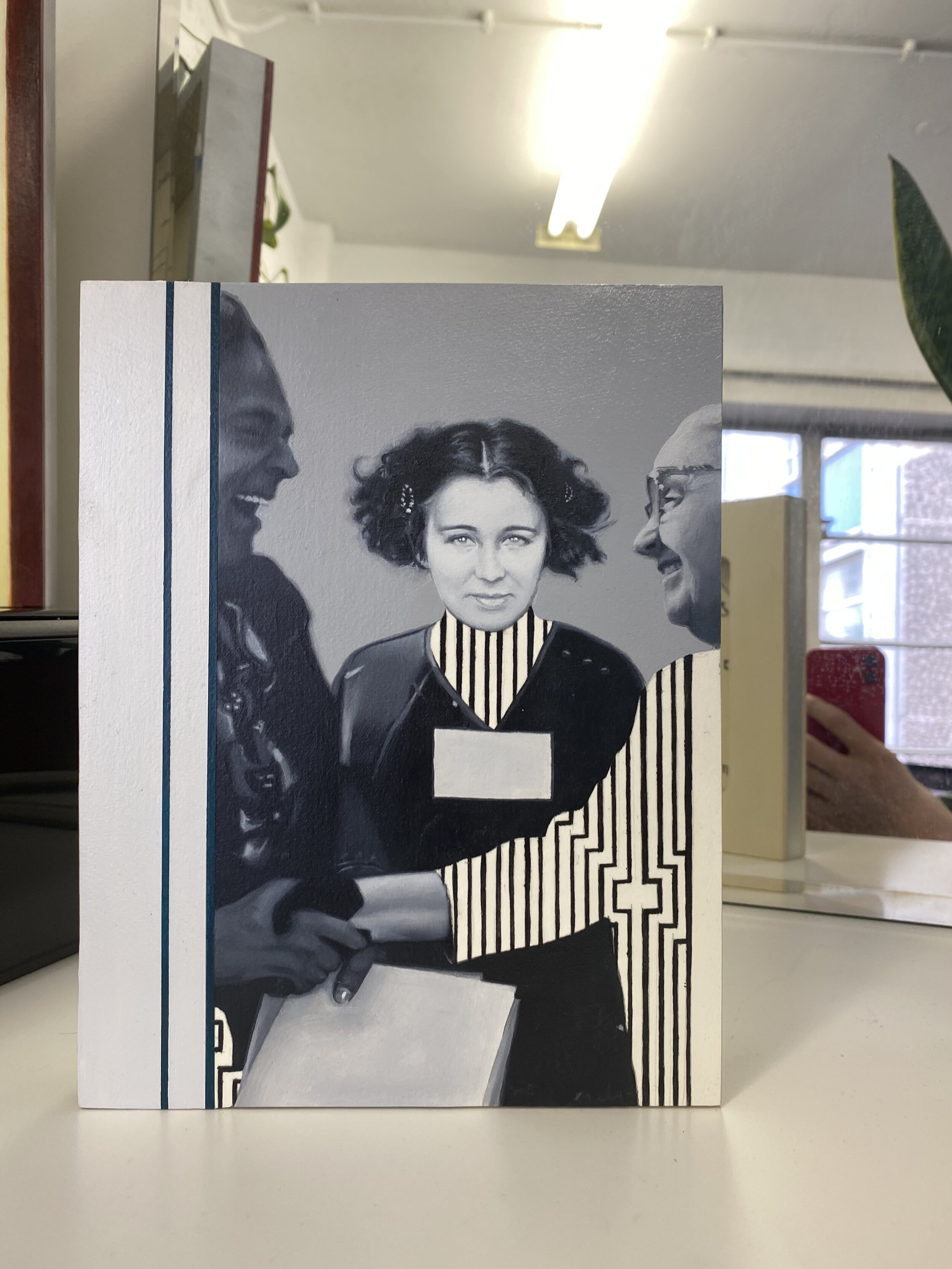The Making Of An Artist Making Art | Studio Visit with Kristian Evju
Interventions VI (2019) 23 x 18 cm, Acrylic on paper on poplar and aluminium panel
In obeisance to his art, Kristian Evju’s days are all the same: wake up, exercise, breakfast, walk to studio, answer emails, play guitar, get painting, lunch, back to painting (his most productive time of day), tidy up and go home. Police sirens blare incessantly on the street below, so he listens to books on noise cancelling headphones. The place is neat, with a Scandinavian attention to order. In the morning, the creative mind cannot afford to arrive at a messy studio.
The routine of it all is important.
“I don’t know any artist who managed to get to a level where they could work (without a part time job) who does not have a really strict routine.” Early on, Kristian determined that he had 5 or 6 truly productive hours in a day, that is, time spent actually painting. Time not spent painting is for managing his career (he has no exclusive representation) or doing what he must email-wise for future projects.
“Treat yourself as a performer, an athlete: sleep well, eat well, exercise, and make sure you do the same thing every day, so you don’t burn energy trying to focus on what you are going to do in the morning. You don’t have that extra energy.” It’s single-minded, myopic even. Kristian didn’t take weekends for the first ten years of his career.
Why embark upon a painterly life of self-abnegation?
Inception (2020) 30 x 40 cm, Acrylic on poplar and aluminium.
When Kristian was born, his father decided to change his own life in three radical ways: quit his job and become an artist, adopt a vegan diet, and convert to fundamentalist Christianity. The sect of evangelism embraced by his father was Seventh Day Adventism; it prohibited television, so Kristian spent a lot of time reading.
“In the evenings” Kristian recalled of that time, “we would sit down and draw together. He was always very good at drawing. He became a successful illustrator in Norway. Because of him, for me drawing was always storytelling. We would sit down with a blank sheet, and he would build a story out of it. I could tell then that my dad was a small dictator. He would say, ‘Draw a car: there’s a chimney on the car: there’s a toad living up there: he smokes a pipe: he’s in love with a squirrel: he’s in front of the car; there’s a bridge going there, but it’s a bit rickety.”
Evju Senior, a painter of national romantic landscapes, believed that one must never work from anything but imagination, painting only what is seen in the mind.
You can follow in your father’s footsteps only so far before you must revolt and stake your own claim. With his father painting strictly from imagination, Kristian’s work can justifiably be called the antithesis. He paints from life, specifically from images that he finds when digging through archives and old books. He assembles a two-dimensional collage of his findings. Five to ten component images, manipulated as he sees fit, typically constitute the subjects of his paintings. The composition will often include shapes, surreal frills, and architectural motifs (this last quality is a factor of how he sees all his work: a scene set on a proscenium stage). They can get up to six-by-eight feet and are rendered in a color pallet that mostly ranges between black and white. His paintings are demonstrably grey. Even though he now uses acrylic, his pictures give the impression of being pencil drawings on paper, an evolutionary holdover from an earlier time when his primary medium was in fact pencil on paper.
As he has gotten older, he’s decided he prefers painting, even if it is in the same hues as a drawing. This is partly to do with physicality. If you’re drawing you are hunched over a table all day, eyes straining. A painter stands erect and, as he puts it, moves into the canvas like a fencer, his brush as his foil.
When he was young, he would think there was a message that the viewer of these surreal fantasies should glean. He’s had to consciously unlearn this presumptuousness. The message he himself gleans from his work changes from day to day, depending on mood and circumstance. By way of explanation, he cites our ability to create and find meaning in fictions:
“If there is something you really want to find in the work, you can. Narrative is our strength, and we build our lives on these fictions. We can conjure one forth using images.”
Words by Cameron Saunders




